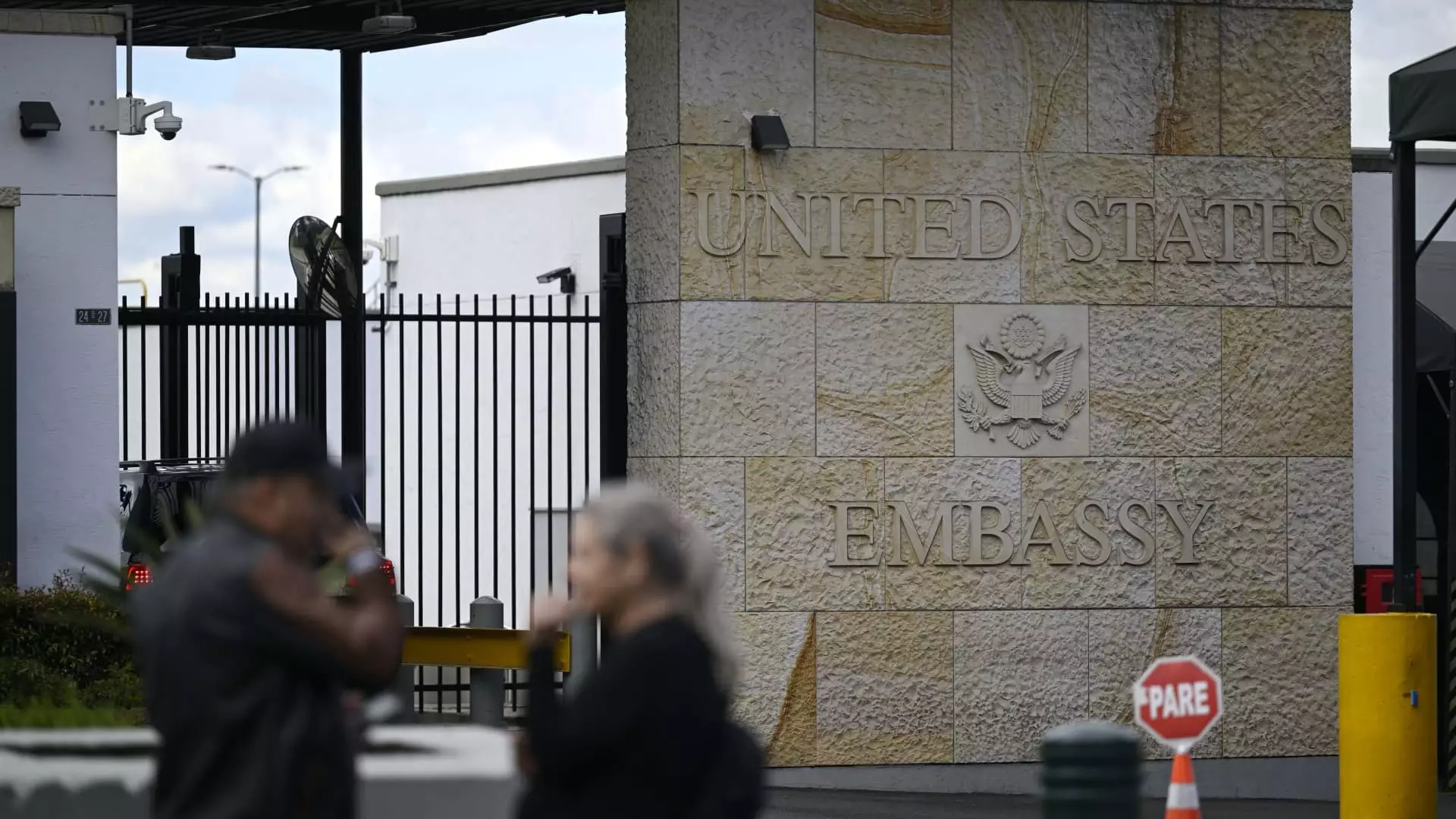The U.S. diplomatic framework has been under intense scrutiny during the Trump administration, reflecting a significant paradigm shift that aligns foreign policy decisions closely with the president’s “America First” strategy. Recently reported efforts to revamp staffing numbers at U.S. embassies illustrate the administration’s commitment to reshaping the diplomatic corps. This development carries implications not only for workforce morale but also for the intricate web of international relations that the United States maintains globally.
Staff Reductions: A Tactical Redesign
According to multiple credible sources, the Trump administration has instructed U.S. embassies across the globe to prepare for staffing reductions, targeting both American and local employees for cuts of approximately 10%. This maneuver was not merely an arbitrary decision; it symbolizes a strategic overhaul intended to bolster the administration’s foreign policy objectives. The instruction for embassies to compile lists of their personnel indicates a granular approach to this transition, letting the State Department evaluate and determine the specific ramifications of these reductions.
Historically, U.S. embassies comprise a diverse team, including diplomats and locally hired staff that understand the socio-cultural dynamics of their host nations. The proposed cuts, therefore, could disrupt the nuanced diplomatic relationships built over years. With a high ratio of local staff in embassies, the implications of downsizing may hinder vital communication channels and local influence that are crucial to executing American interests abroad.
In addition to the potential staffing changes, personnel terminations in the bureau of Democracy, Human Rights, and Labor reveal a broader trend of prioritizing specific political agendas over traditional humanitarian roles. The dismissal of approximately 60 contractors raises concerns about the commitment of the U.S. government to uphold democratic principles and human rights advocacy worldwide. Critics argue that such actions signify a detachment from the responsibility that the U.S. historically embraced as a leader on the global stage.
The president’s directive that any failure to enforce his foreign agenda could lead to professional repercussions emphasizes a management style that cultivates loyalty to his administration over adherence to established diplomatic practices. The ominous prospect of professional discipline or termination for dissenting views threatens the integrity of the diplomatic service and may lead to a culture of fear within the ranks of foreign service officers.
Trump’s executive order directing Secretary of State Marco Rubio to implement transformative changes across the foreign service clearly aims to ensure stringent alignment with his administration’s policies. Past frameworks and guidelines traditionally provided a safety net for decision-making processes that nurtured well-rounded diplomatic discussions. However, the current administration’s approach appears to be stripping away that security, opting instead for a more streamlined, but potentially less inclusive, governance model.
The directive to potentially revise the Foreign Affairs Manual suggests an unsettling trend of redefining the operational mores peculiar to the State Department. A reworking of existing frameworks risks creating a disjointed approach to foreign diplomacy that could inhibit the U.S.’s ability to engage constructively with allies and partners internationally.
As the Trump administration presses forward with its agenda, the orchestration of staffing cuts and the restructuring of U.S. embassies represent a bold effort to recalibrate American diplomacy. However, these changes run the risk of alienating essential global partnerships and undermining longstanding efforts centered around democracy, human rights, and multilateral cooperation.
While such reductions could theoretically lead to streamlining efforts, they also risk erasing valuable institutional knowledge and diplomatic finesse built over decades. The future of U.S. diplomacy rests on a precarious balance between allegiance to the president’s vision and the broader interests of the global community, a nexus that requires careful navigation as these staffing transformations unfold.


Leave a Reply